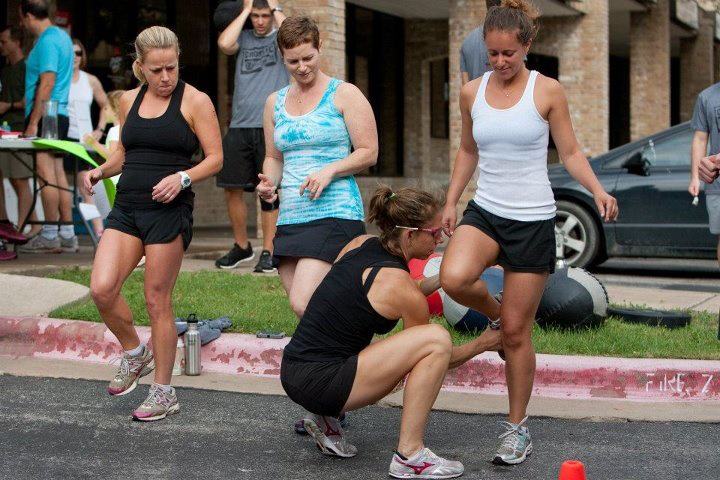Running a race is just as much mental as it is physical. You can be in the best shape of your life, but show up on the start line with a fatalistic, “I can’t do this” attitude, it’s my experienced guess that you won’t. On the flip side, while you can’t give up solid training for attitude alone, developing mental toughness and maintaining a positive outlook can help you get through some bad patches in a marathon, triathlon, obstacle course, or any other type of race. 
Read on to find out a dozen ways you can get your groove back and focus on the light at the end of the tunnel once you’ve flirted with the dark side.
Address Nutrition: When entering batch patch of running, immediately analyze your current state of hydration and calorie intake. Even the best-laid race fuel plans can fail the current situation and you may need to take in more water, electrolytes and a carbohydrate-based snack like a gel, chew or even a whole food, like Medjool dates, as soon as possible. If you are too fatigued to monitor this yourself, please stop at a water or aid station for triage and assistance.
Check Form: Dialing in running form helpful way to bust out of a pre-bonk situation. Are you running efficiently, picking up your feet (not shuffling), is your cadence turning over a good rate, are your shoulders pulled back (no slumping) and your core engaged? I usually check my biomechanics every mile or two and tweak any sloppy form that have as a result of fatigue. I run in Pose Method where gravity helps do the work of running – the support foot is pulled from the ground (hamstring driven), allowing the body to fall forward, while the other foot drops down freely in a change of support. So, another “form check” I do is to chant Pull-Fall-Repeat, over and over and over again!
Control Breathing: Instead of labored panting when things get tough, deploy a bit of deeper breathing from the diaphragm. This slower, more controlled effort helps to better distribute oxygen to the muscles. Try to breath in for two counts and exhale for two counts rather than shallow, single ins and outs.
Mantras, Meditation & Prayer: Everyone from elite runners to newbies can benefit from these mental tactics. Mantras are inspirational short phrases that resonate with your spirit or rasion d’etre when it comes to running. You can utter a mantra out loud for the world to hear or think them over (and over and over again) until your subconscious and conscious self gets the hint. I have used, “Made to Run,” “This is What I Came For,” “Pull, Fall, Repeat,” and, as odd as it sounds, “Hummingbird.” Also, if it fits within your worldview, active meditation and prayers can also be used as a way to transcend the sense of discomfort that racing can bring.
Mental Distractions: Sometimes it’s best to be at one with solitary thoughts and focus on mantras, feedback from your body and the environment. Other times, listening to music, counting your stride, trying to remember all the state capitols, or chatting with a nearby runner can help take your mind off a mild to moderate rough spot.
Find a Focal Point: Lock in on a landmark, sign or traffic cone about 25 yards away. This will give you a new purpose and distract you from the immediate desire to stop dead in your tracks. Forget about making it to the finish line right now, you are just trying to accomplish the new short-term goal — getting to the focal point! A few steps before arriving at the chosen point, choose a new one and keep doing this over and over until you settle into your second (or third) wind.
Draft: Drafting has a negative connotation in some circles, but I look at it as having a moving, human focal point. When running is draining your mental and physical energy, just target a person going about your (desired) pace and follow – you don’t need to invade their physical space, but just hang several yards behand and watch their feet, mimic their cadence and let this rhythm jostle you out of a bad patch. When you’re feeling better, pass and let the runner have a chance to do the same thing behind you.
Slow-to-Surge: This is my all-running take on the Galloway Method which incorporates a run interval, followed by a walk interval, repeated for the entire duration of the race. When I’m in race mode, stopping to walk and then run again does happen in really bad bonk situations. But, typically instead of slowing to a complete walk, I prefer to back off my pace for several minutes and then make up lost ground with a short surge, repeating several times until I’m in a happier place.
Accept the Pain: I love to race, but sometimes it seems like such a sadistic endeavor. I know how bad running at my max effort is going to hurt, and yet sign up for the misery time and time again. But I can accept that because I know the pain is finite and a necessary evil that for the end result. I have a friend who says she has never felt like she was going to die in a race, and I was shocked! I feel like death is imminent in almost every race! While this might sound a bit dramatic, the point is that if you don’t have significant pain during a race (and I’m NOT talking about injury pain), then you have not given everything to the course. Draw on Past Experiences: One of the ways I preserve through “I can’t do this” and “I’m going to quit” thoughts (which strangely can also happen in the front end) is to remember past races I’ve successfully run. I remind myself that I can do this, I’ve trained for this, and I’ve done this many, many times. When I’m hurting, I’ll recall other races when I’ve been hurting worse, I’ll remember what it feels like to finish my 10th 800-meter interval during training, and I’ll remember that by staying mentally strong I can accomplish my goal once again – and this puts everything into perspective.
Draw on Past Experiences: One of the ways I preserve through “I can’t do this” and “I’m going to quit” thoughts (which strangely can also happen in the front end) is to remember past races I’ve successfully run. I remind myself that I can do this, I’ve trained for this, and I’ve done this many, many times. When I’m hurting, I’ll recall other races when I’ve been hurting worse, I’ll remember what it feels like to finish my 10th 800-meter interval during training, and I’ll remember that by staying mentally strong I can accomplish my goal once again – and this puts everything into perspective. 
Visualize the Finish Line: Of course, drawing on past experiences also conjures up lots of relieved, happy, ecstatic feelings of crossing the finish line and reveling in an accomplishment. The anticipation of the finish line can pick up both spirits and pace from about a mile away, but even earlier than that I like to draw a mental picture of what crossing the current finish line will be like. For example, how I will be reunited with my family, how I will get food and drink, how I will get to share all the stories that just happened over the last 26 or however many miles.
Crowd Energy: Do not underestimate the ability of cheering spectators to get your failing motor revved back up. Draw off that free energy greedily and use it to rejuvenate your stride and posture as you make your way to the finish line with authority. Hearing a friend, family member or complete stranger holler out your name or bib # with words of encouragement helps boost up a drooping attitude, even if too tired to turn around and acknowledge the gesture.
What are your tips for turning a bad race situation around? What’s your next race? Please share in the comments – XOXO, Jennifer





I couldn’t agree more with each of these. focus and meditation, power songs, strategically placed cheer (up) sections, and carbs help me! Also, finding something to laugh at, breaking down the race into small sections, and GLUTE ENGAGEMENT!
GLUTE ENGAGEMENT! that confirms your coach status
I love all of these! I have never heard of the “pose method.” THAT sounds intriguing….I need to do a little research on that 😉
You should google it, it’s been really helpful to me!
All awesome advice! Kinda makes me wanna register for another marathon…is that weird?! 😛
It’s not weird, you should! I’ve got about one to two a year in me these days and I’ll do either San Antonio R&R or Dallas White Rock this fall.
Great tips. I have used visualization and I’m surprised how much it helps! Focusing on form is definitely a good way to reset.
Visualization, yes! On a funny note, one race I used to do every year (before it became defunct) was a 5k hosted by a tex-mex joint . . .age group winners would get gift cards to the restaurant. When things started getting tough in the race, I’d just visualize a big plate of tacos waiting for me!